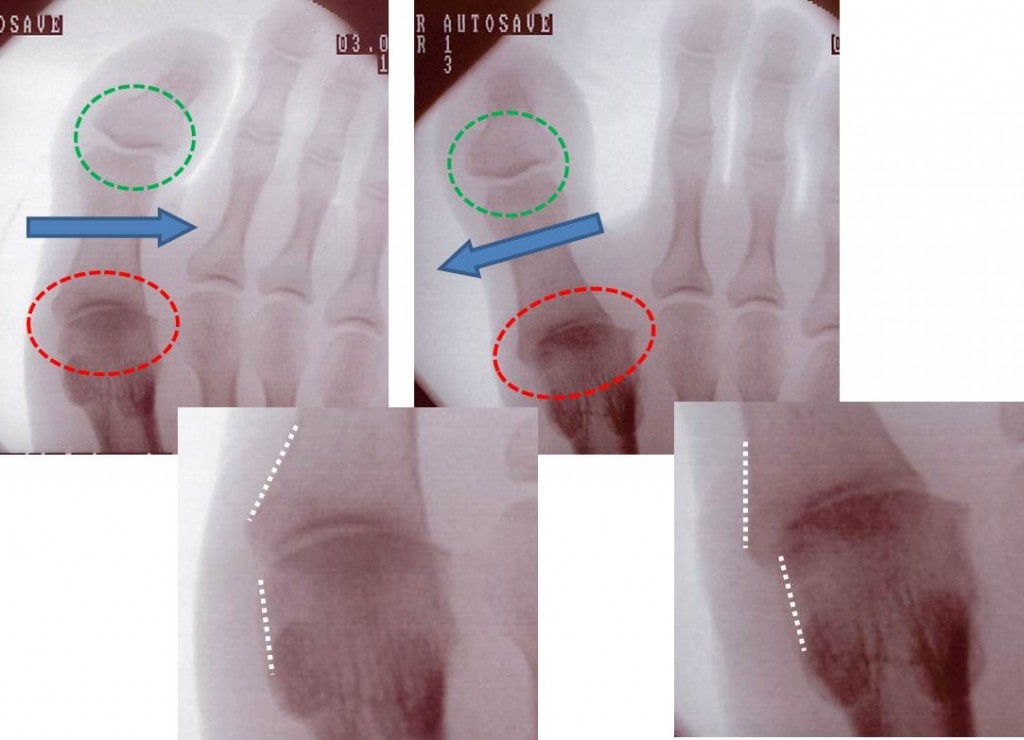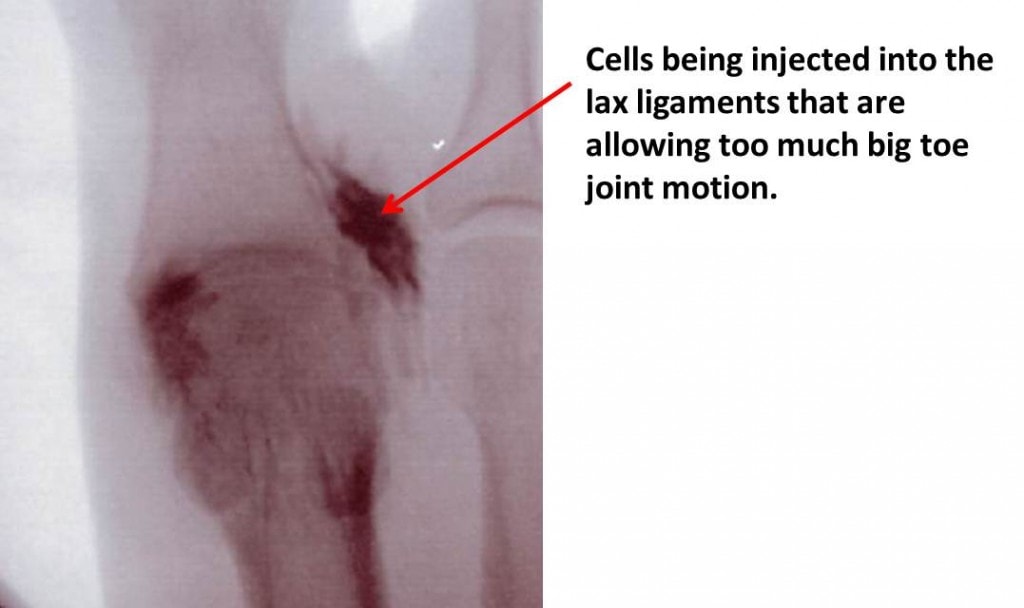Toe Pain with Walking: Instability Causing More Arthritis
I recently saw a thirty something female who injured her big toe cartilage several years ago and had surgery to “clean it up”. As you know from my prior blogs, debridement surgeries to “clean up” cartilage have never been shown to be better than placebo surgeries and if they remove cartilage, they likely lead to more arthritis. This is exactly what this patient is dealing with in her big toe at a young age. We agreed to perform injections using her own stem cells into the big toe MTP joint to help her pain and increase her function. During one of those injections, I noted that the toe was very mobile. More out of interest, I tested the toe back and forth under real time x-ray imaging (fluoroscopy), pictures above. This test allows us to see if the bones remain aligned during movement. All bones that are connected to make joints have ligaments around them which control movement, think of the ligaments as duct tape that helps to stabilize the joint (see our practice’s book, Orthopedics 2.0 for more details about instability and it’s negative impact on joint health). In these pictures, the 1st MTP joint (base of the big toe) is clearly unstable. To better appreciate this, look at the pictures above. The blue arrows denote how the joint was moved in the x-ray. First, the stable toe joint is in the green dashed circle. Note that as the toe is moved to the left and right, it stays aligned. The red circle is the unstable MTP joint at the base of the big toe. Note that as the toe is moved to the left and right, it’s unstable. The blow up pictures of that joint will help delineate this instability. The left blow up picture shows dashed white lines that are placed on the borders of the bone and show that the lines align as the toe is pushed to the right. This means that in this direction, the toe joint is stable. However, as the toe is moved to the left (right blow up picture above), note that the dashed white lines don’t align. This means that the joint is unstable in this direction (the duct tape that holds it together and protects the joint is injured or stretched). This means that with every step, this patient’s big toe joint moves around too much, causing excessive wear and tear in the joint due to the instability. So while placing stem cells in an unstable joint may help for a limited period of time, it won’t help in the long run. Why? Improving the cartilage in the joint when the instability is wearing down cartilage is like replacing the tires on your car with really bad alignment, they will quickly wear out again. So what did we do and why? In this case, the toe joint must be stabilized before we can treat the joint with stem cells. So we injected the lax ligaments as below:
In the x-ray picture above, note that cells are placed exactly into the ligaments on the right side (lateral) of the big toe joint (MTP). The dark colored area is the x-ray contrast. Note that rather than blindly injecting cells somewhere in the vicinity of the big toe, the cell placement is targeted at the specific ligament (duct tape) that’s lax. Once we get the toe more stable and hopefully repair these lax ligaments, we can begin to work on the arthritic joint. What caused this ligament laxity? In all likelihood, she either injured these ligaments during her initial injury or the surgery to debride the joint injured the ligaments. Either way, this big toe instability went unnoticed for years because no one every looked. Again, another example of how applying cells to the musculoskeletal system is not as simple as blindly injecting cells in the general vicinity of where you want them to act. Cell placement has to be thoughtful and focused.

If you have questions or comments about this blog post, please email us at [email protected]
NOTE: This blog post provides general information to help the reader better understand regenerative medicine, musculoskeletal health, and related subjects. All content provided in this blog, website, or any linked materials, including text, graphics, images, patient profiles, outcomes, and information, are not intended and should not be considered or used as a substitute for medical advice, diagnosis, or treatment. Please always consult with a professional and certified healthcare provider to discuss if a treatment is right for you.


